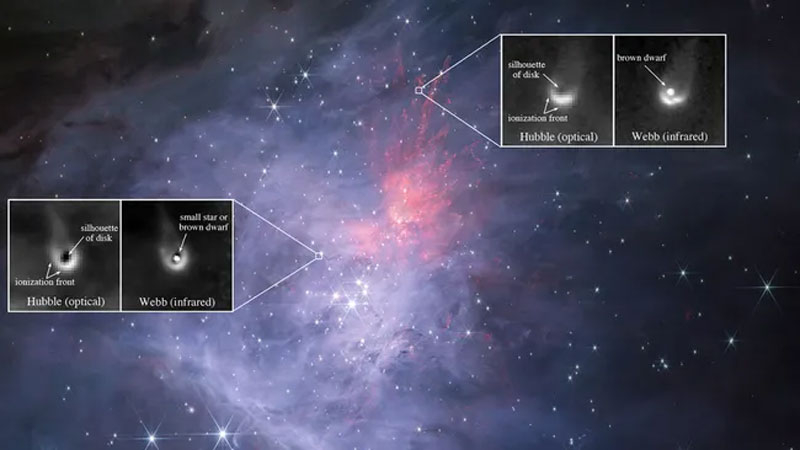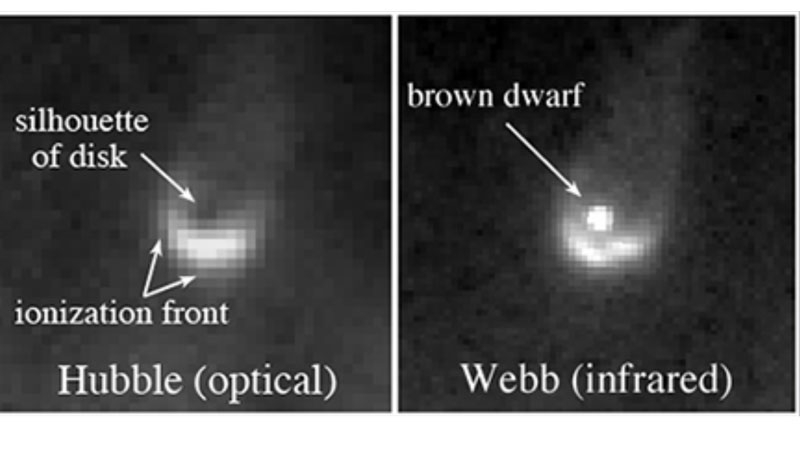Brown dwarfs, or failed stars, as they are nicknamed for their inability to ignite thermonuclear combustion, remain largely unknown objects. The appearance in space of the James Webb infrared telescope was the introduction into operation of the most suitable instrument for studying these relatively cold and therefore invisible substars in the optical range. “Webb” is ready to reveal their secrets, including the possibility of the appearance of planets and life.

Image source: NASA/ESA/CSA
Even in the first years of observations by the Hubble telescope, objects resembling protoplanetary disks (proplyds) were discovered in one of the star formation zones close to Earth in the Orion Nebula. However, it was only with the appearance of Webb that objects that could be considered brown dwarfs were identified in the center of the proplyds. Infrared spectroscopy from Webb’s instruments measured their temperature and estimated their mass, hinting at whether brown dwarfs might have planetary systems of their own. Most likely they can.
In the observed region of the Orion Nebula, 1,500 light-years away from Earth, Webb discovered more than two dozen brown dwarf candidates. A set of statistics on these objects will reveal a lot for science. It is currently believed that the mass of brown (aka brown) dwarfs lies in the range of 0.015–0.075 solar masses. Webb is able to detect such objects and, importantly, allows us to estimate their temperature, which can be used to distinguish a brown dwarf from a star.
For example, one of the candidates discovered by Webb has a mass of 0.05 solar masses – about the same as five Jupiters. And such examples are enough for scientists to better understand the nature of brown dwarfs and, in particular, their ability to form their own planetary systems.

«New JWST observations only scratch the surface of the issue of brown dwarfs in Orion, scientists say. — The nebula contains several hundred faint objects that could be brown dwarfs, ready for spectroscopy by JWST. Future observations of Orion with JWST could potentially detect many more examples of proplydes around brown dwarfs and determine the smallest mass at which brown dwarfs exist. This information will help us fill gaps in our knowledge of how brown dwarfs form and their relationship to stars and planets.”